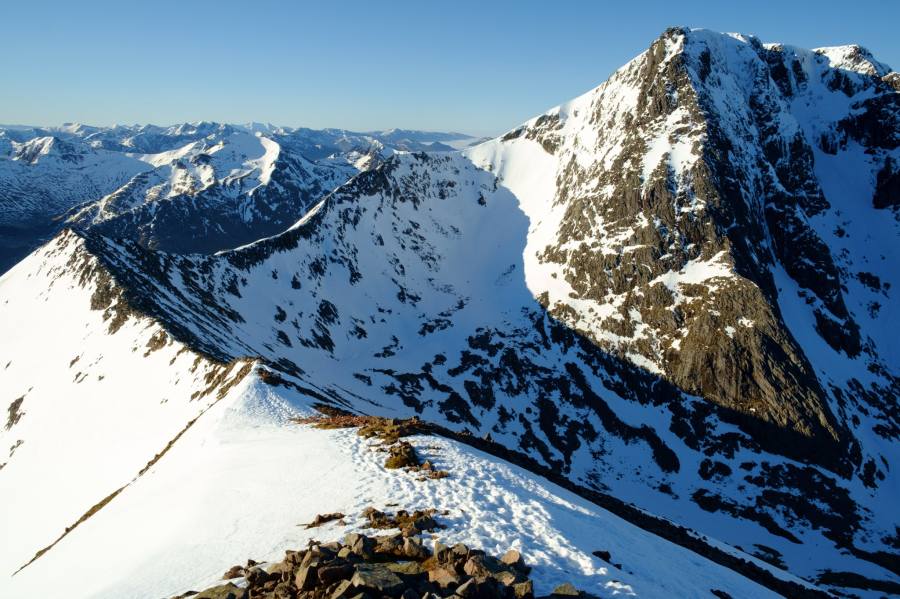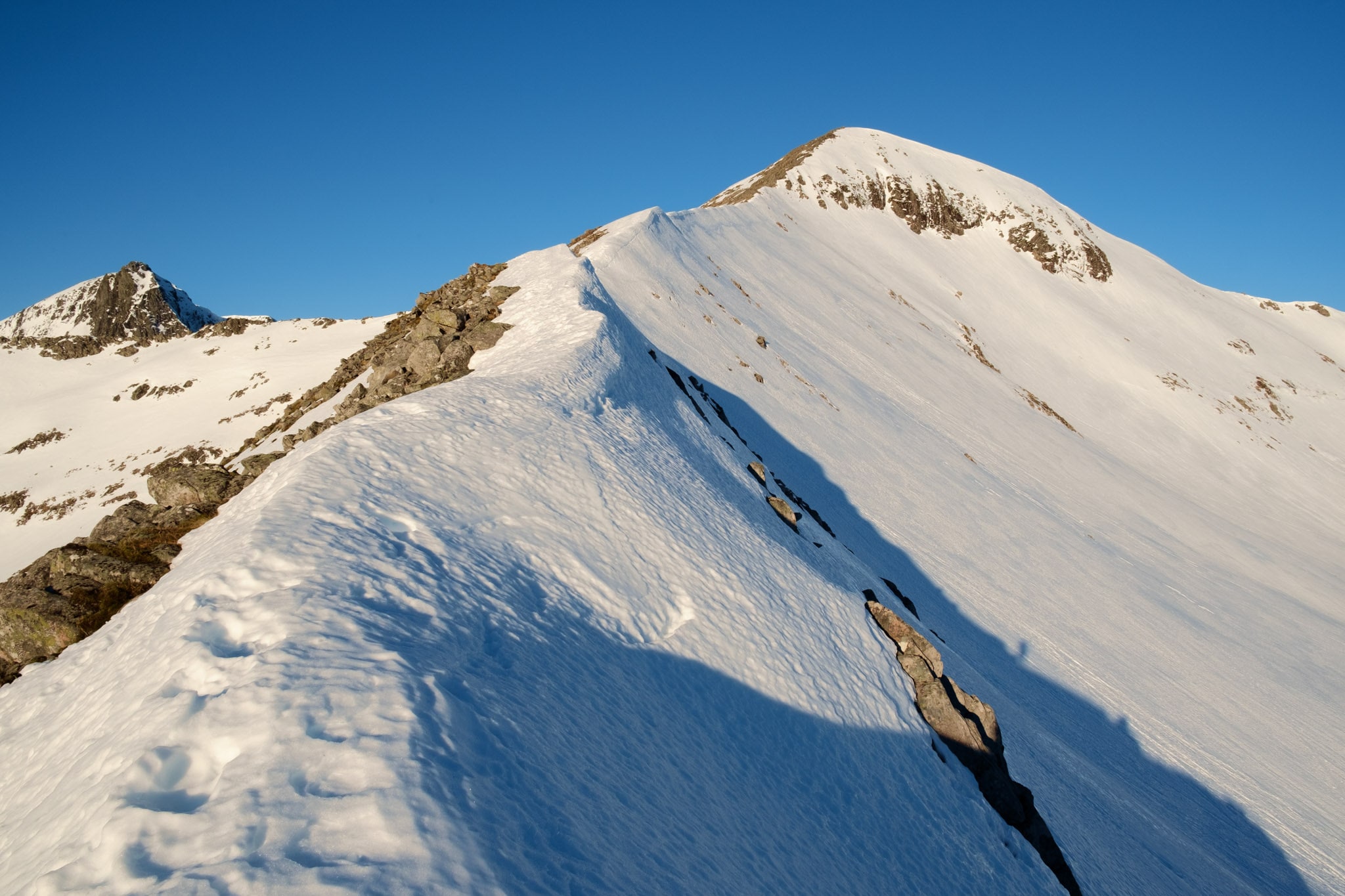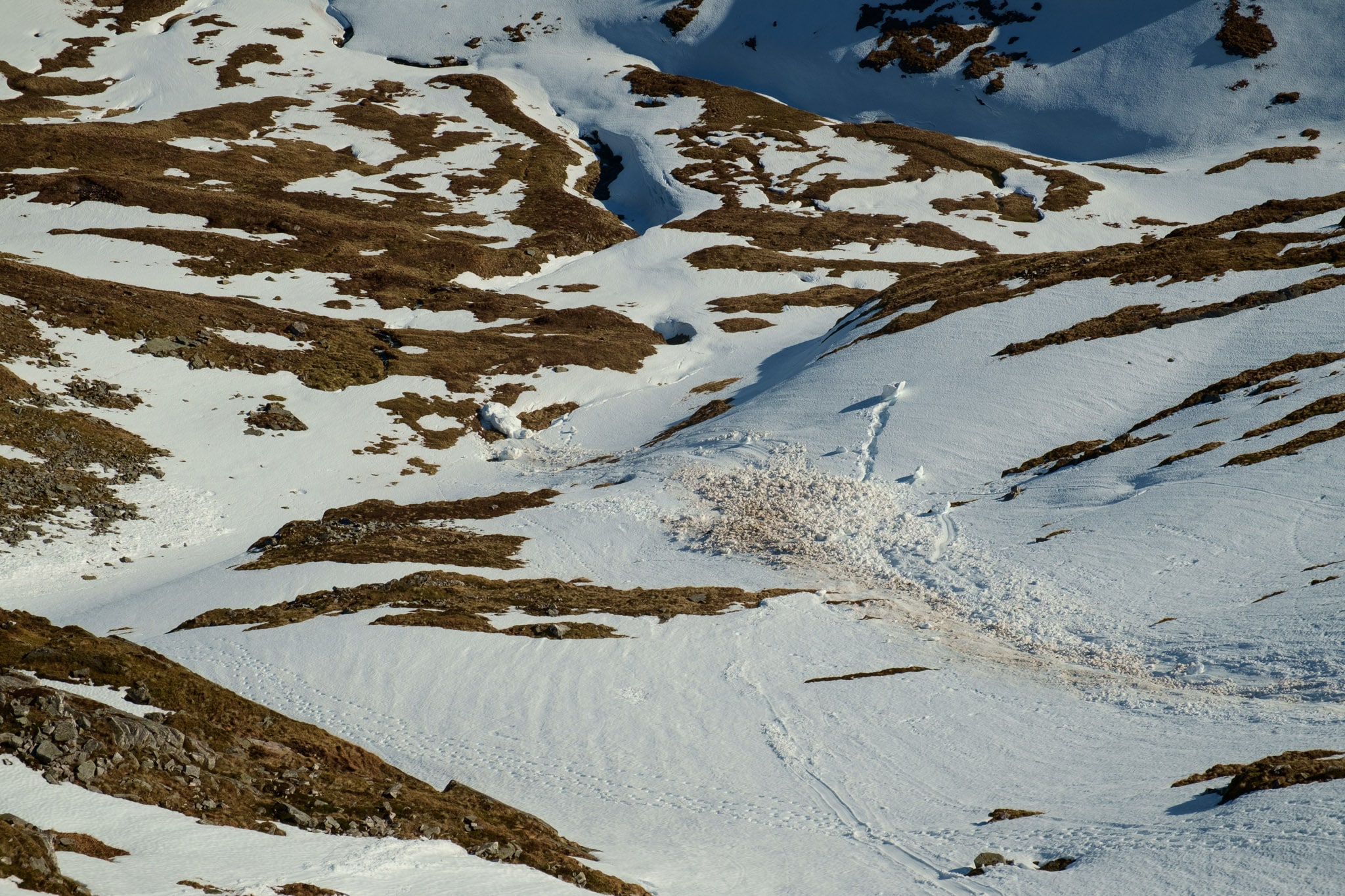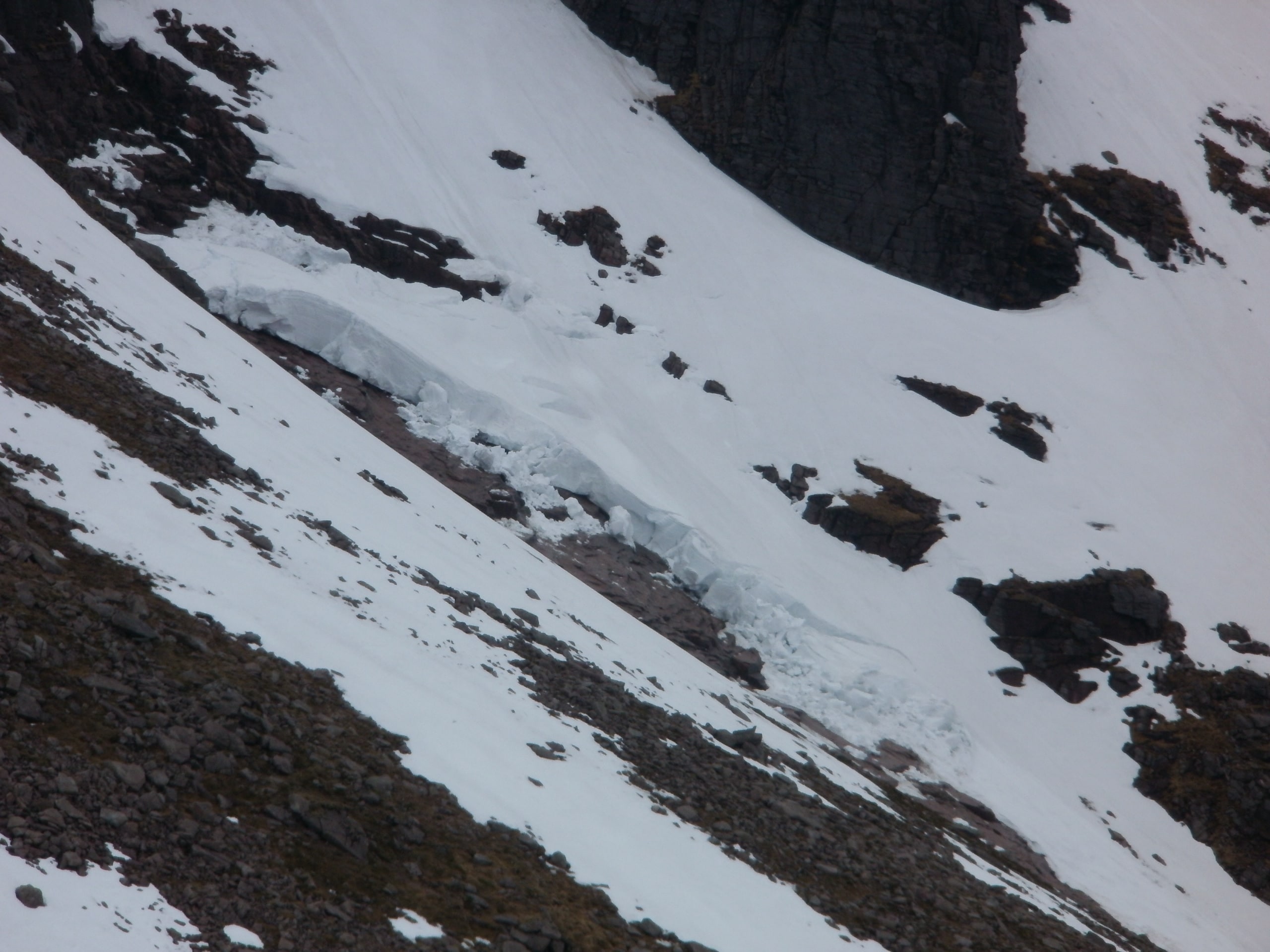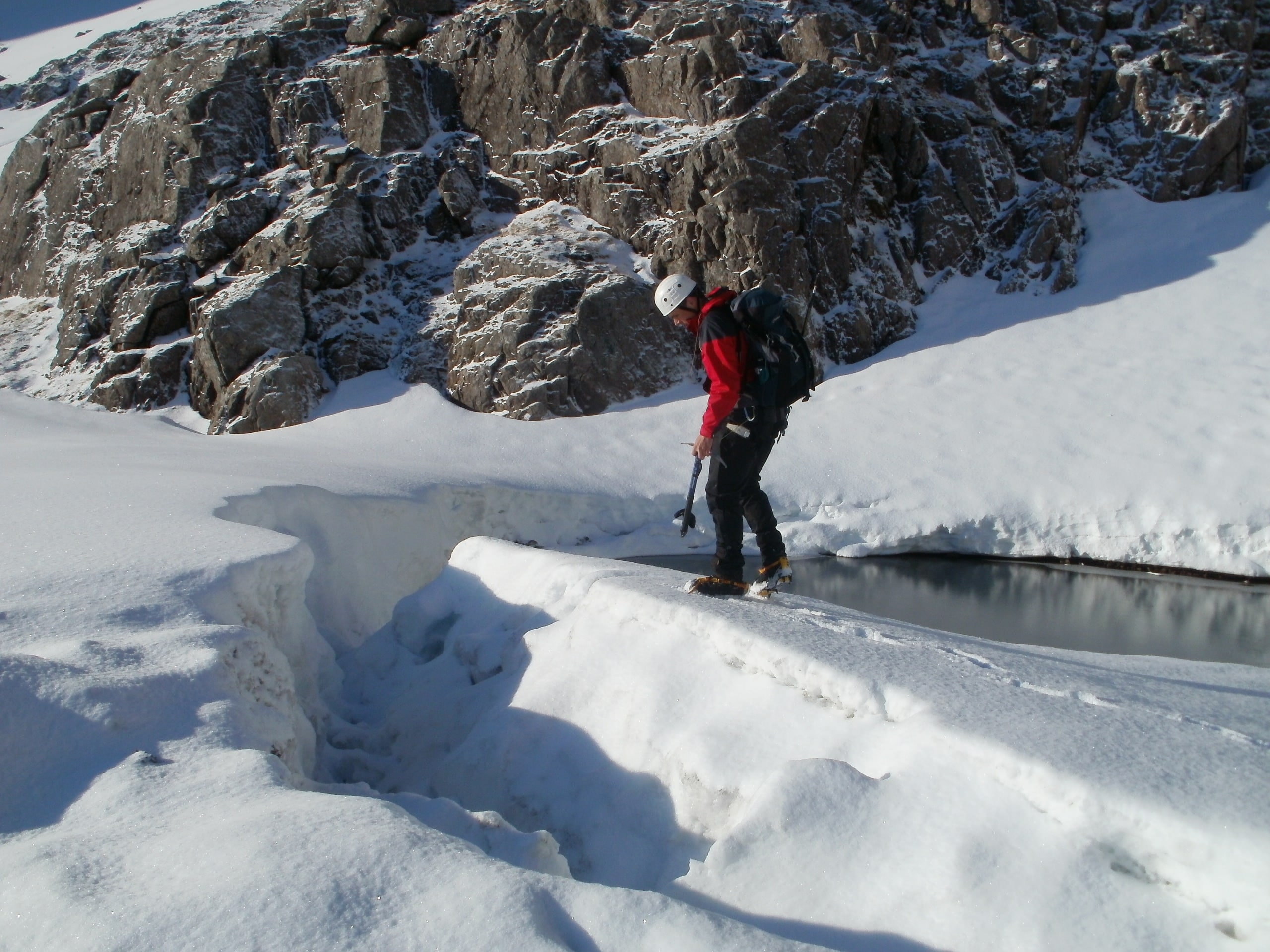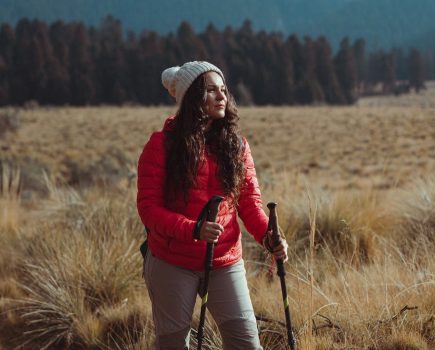When conditions are right, late-season winter mountaineering can feel a bit like being in the Alps. Here’s how to enjoy it
By Alex Roddie
For much of the UK, winter is finally drawing to a close. But snow and ice persist in the mountains. In March, April and even May, some routes in the Scottish Highlands can resemble the Alps when conditions are right. Put on your sunglasses and sharpen your ice axe – here are our tips for making the most of Alpine Scotland.
How do the mountains change?
Earlier in the winter, daylight hours are short, Atlantic gales are commonplace along with periods of intense snowfall, and temperatures can be very low. These factors conspire to create incredibly changeable conditions. While the picture looks different from one day to the next, snow tends to consolidate slowly earlier in the winter, and spells of settled weather are often fleeting. Finding good conditions for winter mountaineering can be a lottery to say the least.
As the days lengthen and the sun picks up a bit more heat, a few things change on the higher Scottish hills. While any conditions can and will be found, in the average year snow will usually consolidate and bond more quickly in late season. Periods of thaw become more intense and gradually strip snow away from exposed slopes and ridges, eventually leaving only the gully lines complete before they, too, succumb. In spells of settled weather – more common in the springtime – heat during the day, coupled with sub-zero temperatures at night, create powerful freeze/thaw cycles that can lead to collapsing cornices and wet-snow slides in the afternoon, but often icy and perfect snow just after dawn. The bigger mountains start to exhibit snow features such as glide cracks that look awfully like crevasses if you squint a bit.
The net result is that, if you catch them on the right day, the Scottish mountains can resemble the Alps – and adopting an Alpine mentality can help make the most of them.
Tactics for success
1. Keep an eye on conditions
You might be more likely to find stable snow late in the season, but that doesn’t mean you can take your attention off conditions – they’re still just as changeable. Check the mountain weather forecast and avalanche report every day to build up a mental picture of what’s happening in your area of choice. Keep up to date with trip reports on blogs and Twitter too.
If you’re looking for winter mountaineering possibilities, you’ll probably want your trip to coincide with high pressure and low temperatures.
2. Choose your route carefully
Ice climbers love late season because the classic big ice routes on Ben Nevis often come into condition, but for walkers and low-grade mountaineers there’s still plenty to enjoy. If you’re careful to avoid cornices – which are often gigantic and prone to collapse in late season – then the easy gullies can be sublime at this time of year, filled up with crisp névé. And for that Alpine feel, a nice easy ridge can’t be beaten. There’s something wonderful about striding along a sunlit ridge with crunchy snow under your crampons and blue sky blazing down on you.
Snow often softens very quickly in late season when exposed to the sun, so don’t be afraid to start in the dark if necessary
Don’t forget the descent. If you plan to be crossing sun-exposed slopes that could be at risk from a wet slide, it’s worth planning an alternative way down.
4. Pack sunglasses and sun cream
Yes, really! A sunny day high in the Cairngorms in March can feel very warm if the air is still and the sun’s out, and you’ve just spent months covered up against the sun. Protect yourself if you’re prone to burning – and even if you aren’t, sunglasses should be considered essential gear to prevent snow blindness.
5. Be flexible
You may arrive at your ridge to find the snow has been stripped. If so, don’t just plow on up in your crampons – treat it as a rocky scramble, perhaps cutting steps up the few remaining patches of snow. Or go and climb a gully instead. Take conditions as they come.
6. Start early
If it’s a sunny forecast and you want to experience that nice firm névé, you’ll need to start well before dawn. Snow often softens very quickly in late season when exposed to the sun, so don’t be afraid to start in the dark if necessary. This means, of course, that good navigation is essential. On the plus side, there’s more daylight, so you’re far less likely to be coming down in the dark as well.
7. Enjoy
When it all comes together, there’s nothing quite as good as a sunny late-season winter’s day out in the Scottish Highlands. The blue sky and warm sun, combined with a great depth of snow where it survives – and perhaps impressive snow formations – can make familiar hills seem like Everests. And all the time you spent slogging uphill in freezing mist and knee-deep powder earlier in the season is suddenly forgotten.

